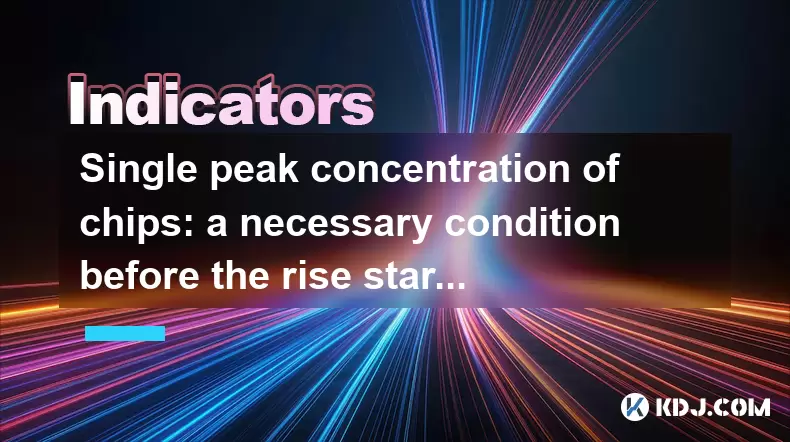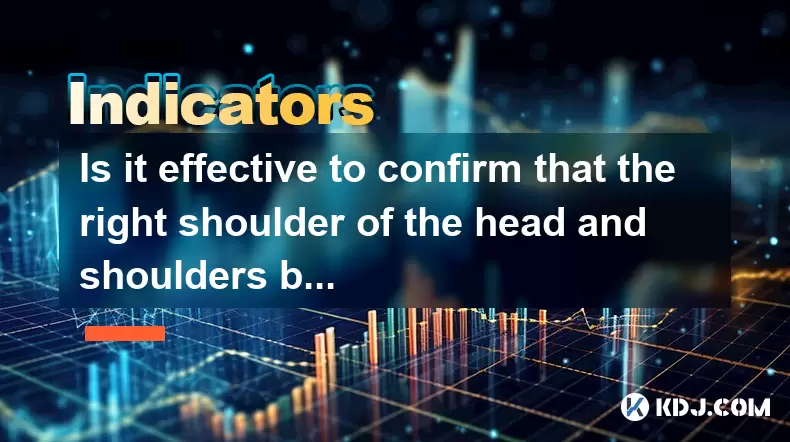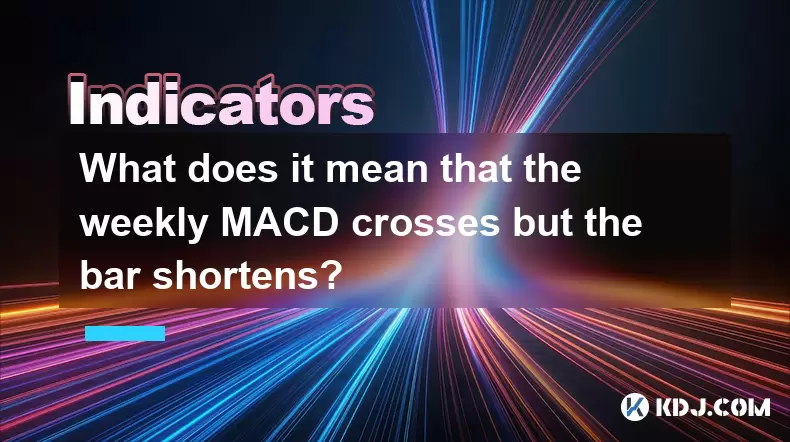-
 Bitcoin
Bitcoin $106,754.6083
1.33% -
 Ethereum
Ethereum $2,625.8249
3.80% -
 Tether USDt
Tether USDt $1.0001
-0.03% -
 XRP
XRP $2.1891
1.67% -
 BNB
BNB $654.5220
0.66% -
 Solana
Solana $156.9428
7.28% -
 USDC
USDC $0.9998
0.00% -
 Dogecoin
Dogecoin $0.1780
1.14% -
 TRON
TRON $0.2706
-0.16% -
 Cardano
Cardano $0.6470
2.77% -
 Hyperliquid
Hyperliquid $44.6467
10.24% -
 Sui
Sui $3.1128
3.86% -
 Bitcoin Cash
Bitcoin Cash $455.7646
3.00% -
 Chainlink
Chainlink $13.6858
4.08% -
 UNUS SED LEO
UNUS SED LEO $9.2682
0.21% -
 Avalanche
Avalanche $19.7433
3.79% -
 Stellar
Stellar $0.2616
1.64% -
 Toncoin
Toncoin $3.0222
2.19% -
 Shiba Inu
Shiba Inu $0.0...01220
1.49% -
 Hedera
Hedera $0.1580
2.75% -
 Litecoin
Litecoin $87.4964
2.29% -
 Polkadot
Polkadot $3.8958
3.05% -
 Ethena USDe
Ethena USDe $1.0000
-0.04% -
 Monero
Monero $317.2263
0.26% -
 Bitget Token
Bitget Token $4.5985
1.68% -
 Dai
Dai $0.9999
0.00% -
 Pepe
Pepe $0.0...01140
2.44% -
 Uniswap
Uniswap $7.6065
5.29% -
 Pi
Pi $0.6042
-2.00% -
 Aave
Aave $289.6343
6.02%
Single peak concentration of chips: a necessary condition before the rise starts?
A single peak concentration of chips indicates significant crypto supply held by few wallets, often signaling potential price volatility or manipulation.
Jun 15, 2025 at 07:07 pm

Understanding Single Peak Concentration of Chips
The term single peak concentration of chips refers to a specific phenomenon observed in the on-chain transaction data and wallet analysis of cryptocurrencies. It describes a situation where a significant portion of a cryptocurrency’s supply is concentrated within a limited number of addresses or entities, often forming a "peak" when visualized on a distribution chart. This concentration can be temporary or long-term and may indicate various market behaviors such as accumulation by whales, strategic holding patterns, or even manipulation.
In technical terms, this phenomenon is typically identified using on-chain analytics tools, which allow analysts to track the distribution of tokens across wallets over time. When a single peak appears—meaning most tokens are held by a small group—it often raises questions about market centralization, volatility risks, and potential price movements.
How Does Chip Concentration Impact Market Dynamics?
When there's a single peak concentration of chips, it means that control over the asset lies with a few holders. In the context of cryptocurrencies, this can have several implications:
- Increased Volatility: If a large holder decides to sell a significant portion of their holdings, it can cause drastic price swings.
- Market Manipulation Risk: A concentrated supply makes it easier for large players to manipulate prices through coordinated buying or dumping.
- Reduced Liquidity: With fewer participants controlling most of the supply, trading volume might not reflect actual demand accurately.
- Price Discovery Challenges: The market may struggle to find an accurate valuation due to uneven distribution.
It’s crucial to note that while concentration doesn’t directly cause price increases or decreases, it creates conditions under which such movements become more likely and more extreme.
Is Single Peak Concentration a Prerequisite for Price Rises?
Many analysts speculate whether a single peak concentration of chips is a necessary condition before a price rise begins. Historical data from several altcoins and even Bitcoin suggests that major rallies often follow periods where token ownership consolidates.
Here’s how this process usually unfolds:
- Accumulation Phase: Whales or institutional investors begin accumulating tokens quietly, leading to a gradual increase in concentration.
- Consolidation Period: As smaller holders sell off, the supply becomes increasingly controlled by fewer entities.
- Breakout Trigger: Once consolidation completes and demand surpasses supply, a breakout occurs, often marked by a rapid price increase.
However, this pattern isn't universal. Some cryptocurrencies experience price surges without notable chip concentration, especially those with strong community-driven adoption and decentralized governance models.
How to Analyze Chip Distribution Using On-Chain Tools
To assess whether a cryptocurrency exhibits single peak concentration of chips, you can use on-chain analytics platforms like:
- Glassnode
- Santiment
- Dune Analytics
These tools provide dashboards where users can visualize token distribution across different wallet sizes. Here’s how to conduct this analysis step-by-step:
- Access a blockchain explorer or on-chain analytics dashboard for the relevant cryptocurrency.
- Locate the token distribution section, often labeled as “Wallet Distribution” or “Holding Tiers.”
- Observe the percentage of tokens held by top addresses, especially the top 10, 100, and 1000 wallets.
- Compare historical data to determine if there’s been a recent spike or sustained period of increased concentration.
- Cross-reference with price charts to see if past concentration events correlate with price movements.
This method allows traders and analysts to make informed decisions based on real-time data rather than speculation.
What Are the Risks Associated with High Chip Concentration?
While some view high chip concentration as a precursor to bullish trends, it comes with substantial risks:
- Whale Control: A handful of wallets can exert undue influence over the market, potentially crashing or inflating prices at will.
- Regulatory Scrutiny: Centralized token ownership can attract regulatory attention, especially if deemed manipulative.
- Lack of Decentralization: One of the core principles of blockchain technology is decentralization. High concentration contradicts this ethos and can erode trust among retail investors.
- Sudden Dumping: If whales decide to liquidate their positions, it can lead to catastrophic losses for smaller investors caught unaware.
Therefore, while single peak concentration of chips might signal an upcoming rally, it should always be interpreted alongside other indicators such as trading volume, fundamentals, and macroeconomic factors.
Frequently Asked Questions (FAQs)
Q: Can a cryptocurrency recover after experiencing high chip concentration?
A: Yes, recovery is possible if new demand emerges and distribution becomes more balanced over time. However, this often requires active participation from the broader community or institutional buyers entering the market.
Q: How does chip concentration differ between Bitcoin and altcoins?
A: Bitcoin generally has a more distributed supply compared to many altcoins. Altcoins, especially newer ones, are more prone to high chip concentration due to early investor allocations, team reserves, and speculative trading behavior.
Q: Is there a way to mitigate the risks associated with chip concentration?
A: Projects can implement mechanisms like token burns, fair launches, or vesting schedules to prevent excessive concentration. Investors should also diversify their portfolios and avoid assets with overly centralized ownership structures.
Q: Do all price rises in crypto markets require chip concentration beforehand?
A: No, not all price increases are preceded by chip concentration. Sudden news events, technological upgrades, or broad market sentiment shifts can drive price appreciation even in well-distributed tokens.
Disclaimer:info@kdj.com
The information provided is not trading advice. kdj.com does not assume any responsibility for any investments made based on the information provided in this article. Cryptocurrencies are highly volatile and it is highly recommended that you invest with caution after thorough research!
If you believe that the content used on this website infringes your copyright, please contact us immediately (info@kdj.com) and we will delete it promptly.
- 2025-W Uncirculated American Gold Eagle and Dr. Vera Rubin Quarter Mark New Products
- 2025-06-13 06:25:13
- Ruvi AI (RVU) Leverages Blockchain and Artificial Intelligence to Disrupt Marketing, Entertainment, and Finance
- 2025-06-13 07:05:12
- H100 Group AB Raises 101 Million SEK (Approximately $10.6 Million) to Bolster Bitcoin Reserves
- 2025-06-13 06:25:13
- Galaxy Digital CEO Mike Novogratz Says Bitcoin Will Replace Gold and Go to $1,000,000
- 2025-06-13 06:45:13
- Trust Wallet Token (TWT) Price Drops 5.7% as RWA Integration Plans Ignite Excitement
- 2025-06-13 06:45:13
- Ethereum (ETH) Is in the Second Phase of a Three-Stage Market Cycle
- 2025-06-13 07:25:13
Related knowledge

How to interpret the low opening the next day after the long lower shadow hits the bottom?
Jun 18,2025 at 12:22am
Understanding the Long Lower Shadow Candlestick PatternIn technical analysis, a long lower shadow candlestick is often seen as a potential reversal signal in a downtrend. This pattern occurs when the price opens, trades significantly lower during the session, but then recovers to close near the opening price or slightly above. The long wick at the botto...

How to operate the RSI indicator repeatedly in the 40-60 range?
Jun 18,2025 at 12:56am
Understanding the RSI Indicator and Its RelevanceThe Relative Strength Index (RSI) is a momentum oscillator widely used in cryptocurrency trading to measure the speed and change of price movements. Typically, the RSI ranges from 0 to 100, with levels above 70 considered overbought and below 30 considered oversold. However, when the RSI repeatedly stays ...

How strong is the MACD golden cross below the zero axis?
Jun 17,2025 at 11:00pm
Understanding the MACD Indicator in Cryptocurrency TradingThe Moving Average Convergence Divergence (MACD) is one of the most widely used technical indicators among cryptocurrency traders. It helps identify potential trend reversals, momentum shifts, and entry or exit points. The MACD consists of three main components: the MACD line, the signal line, an...

How effective is the golden cross of the William indicator double line in the oversold area?
Jun 17,2025 at 11:56pm
Understanding the William Indicator and Its Double Line SetupThe William %R (Williams Percent Range) is a momentum oscillator used to identify overbought or oversold conditions in a market. It ranges from 0 to -100, with readings above -20 considered overbought and below -80 deemed oversold. The double line setup refers to plotting two different timefra...

Is it effective to confirm that the right shoulder of the head and shoulders bottom volume at the 30-minute level is enlarged?
Jun 17,2025 at 11:42pm
Understanding the Head and Shoulders Pattern in Cryptocurrency TradingThe head and shoulders pattern is one of the most recognized reversal patterns in technical analysis, especially within cryptocurrency trading. It typically signals a potential shift from a bullish trend to a bearish one. This pattern consists of three peaks: the left shoulder, the he...

What does it mean that the weekly MACD crosses but the bar shortens?
Jun 18,2025 at 01:07am
Understanding the MACD IndicatorThe Moving Average Convergence Divergence (MACD) is a popular technical analysis tool used in cryptocurrency trading to identify potential trend reversals and momentum shifts. It consists of three main components: the MACD line, the signal line, and the histogram (also known as the bar). The MACD line is calculated by sub...

How to interpret the low opening the next day after the long lower shadow hits the bottom?
Jun 18,2025 at 12:22am
Understanding the Long Lower Shadow Candlestick PatternIn technical analysis, a long lower shadow candlestick is often seen as a potential reversal signal in a downtrend. This pattern occurs when the price opens, trades significantly lower during the session, but then recovers to close near the opening price or slightly above. The long wick at the botto...

How to operate the RSI indicator repeatedly in the 40-60 range?
Jun 18,2025 at 12:56am
Understanding the RSI Indicator and Its RelevanceThe Relative Strength Index (RSI) is a momentum oscillator widely used in cryptocurrency trading to measure the speed and change of price movements. Typically, the RSI ranges from 0 to 100, with levels above 70 considered overbought and below 30 considered oversold. However, when the RSI repeatedly stays ...

How strong is the MACD golden cross below the zero axis?
Jun 17,2025 at 11:00pm
Understanding the MACD Indicator in Cryptocurrency TradingThe Moving Average Convergence Divergence (MACD) is one of the most widely used technical indicators among cryptocurrency traders. It helps identify potential trend reversals, momentum shifts, and entry or exit points. The MACD consists of three main components: the MACD line, the signal line, an...

How effective is the golden cross of the William indicator double line in the oversold area?
Jun 17,2025 at 11:56pm
Understanding the William Indicator and Its Double Line SetupThe William %R (Williams Percent Range) is a momentum oscillator used to identify overbought or oversold conditions in a market. It ranges from 0 to -100, with readings above -20 considered overbought and below -80 deemed oversold. The double line setup refers to plotting two different timefra...

Is it effective to confirm that the right shoulder of the head and shoulders bottom volume at the 30-minute level is enlarged?
Jun 17,2025 at 11:42pm
Understanding the Head and Shoulders Pattern in Cryptocurrency TradingThe head and shoulders pattern is one of the most recognized reversal patterns in technical analysis, especially within cryptocurrency trading. It typically signals a potential shift from a bullish trend to a bearish one. This pattern consists of three peaks: the left shoulder, the he...

What does it mean that the weekly MACD crosses but the bar shortens?
Jun 18,2025 at 01:07am
Understanding the MACD IndicatorThe Moving Average Convergence Divergence (MACD) is a popular technical analysis tool used in cryptocurrency trading to identify potential trend reversals and momentum shifts. It consists of three main components: the MACD line, the signal line, and the histogram (also known as the bar). The MACD line is calculated by sub...
See all articles

























































































